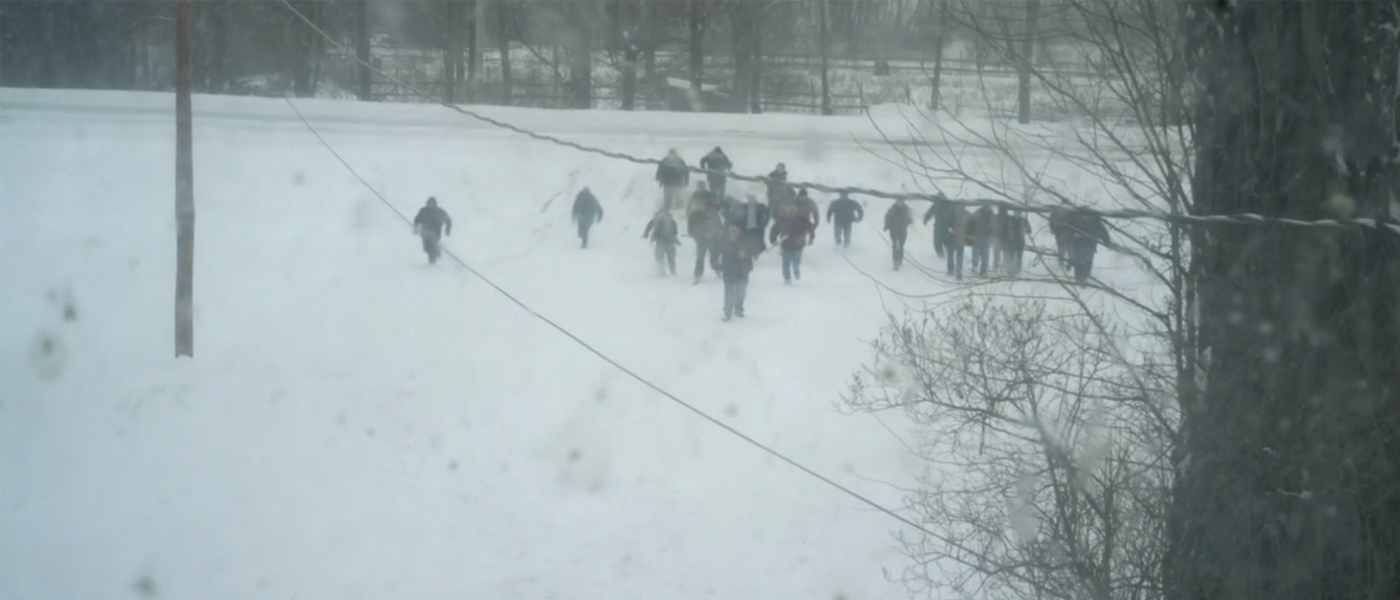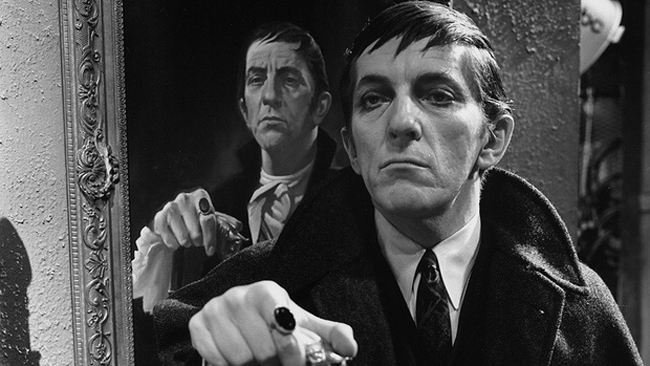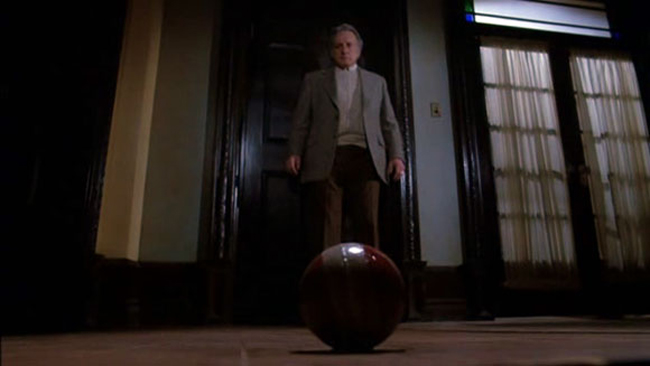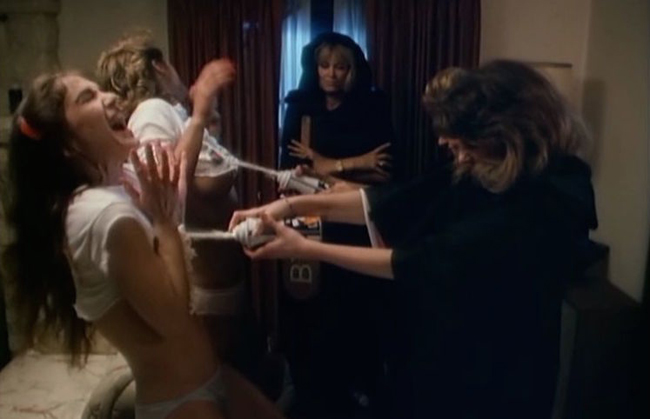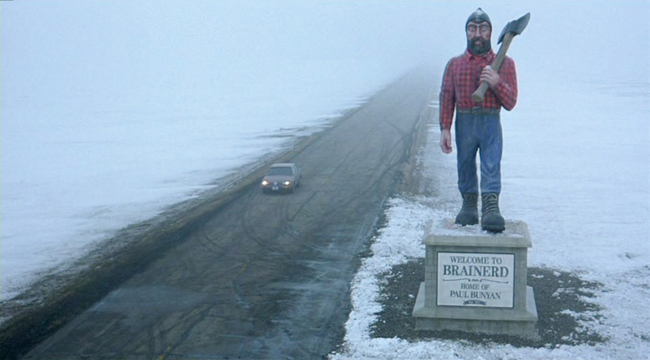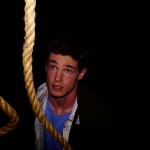Ted Geoghegan is no stranger to wintery fields similar to those seen in his film
We Are Still Here. Growing up in Montana, the “homestate” we share, his free time was spent taking in as much horror as possible, & meticulously cataloging moments & methods of on-screen deaths. Who would have thought the man who sold me a copy of
Guinea Pig: Devil’s Experiment at a garage sale, would go on to direct one of my favorite films of 2015? With the physical release of
We Are Still Here right around the corner (available
October 6th), here are the films that shaped Ted’s Fulci-esque ghost story.
1) The House of the Devil (2009)
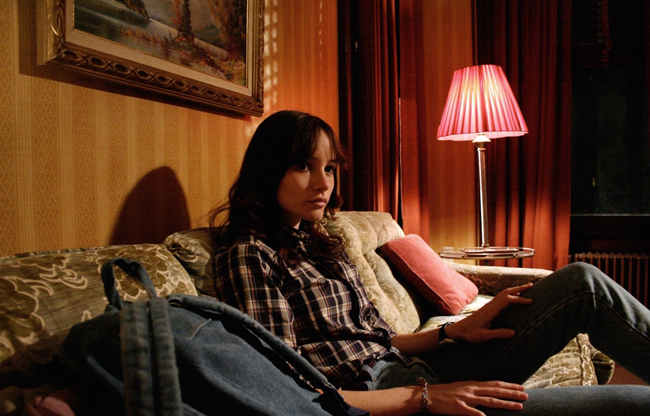
Ti West’s brilliantly quiet supernatural thriller casts a long shadow over We Are Still Here. Aside from the fact that both movies were from Dark Sky Films, they’re also period pieces set in a single, isolated location and rely on a patient audience to understand the atmospheric scares we’re presenting them. I’ve since become friends with Ti, and continue enjoy his smart, outsider take on the genre. I hope I’ve managed to insert even a small percent of his originality into my own film.
2) Dark Shadows (1966 – 1971)
From the original series to its followup films, Dark Shadows was a very powerful influence on my genre tastes – teaching me that classic cinematic and television techniques can work very well in modern film. The program’s use of melodrama, first and foremost, was a stylistic choice I loved, and one that I hoped to incorporate into We Are Still Here… carefully walking a fine line between hyper-reality and camp, while never winking at one’s audience.
3) The Changeling (1980)
It was a wildly bold choice for director Peter Medak to craft a ghost story starring a man in his mid-50s, that never tried to cater to traditional horror demographics – yet the film went on to become a horror classic that appealed to genre fans of all ages. It proved that the age of one’s cast did not dictate the age of one’s audience… and my ball-rolling-down-the-stairs gag is a direct homage to one of its most terrifying scenes.
4) Sorority Babes in the Slimeball Bowl-O-Rama (1988)
One of my favorite films of all time, this cheesy slice of 80s exploitation always reminds me to smile – and that regardless of one’s budget, to make sure that whatever you’re doing is fun. At one point in Sorority Babes, a character tells the tale of a man named Dave McCabe, who once sold his soul to bowl a perfect game. The villainous town patriarch in my film is lovingly named after him.
5) Fargo (1996)
Ethan and Joel Cohen certainly know how to set a film in a location that feels desolate. Even with a vast majority of Fargo taking place during the day, the film feels imposing and – at times – terrifying in its isolation. Choosing to set almost all of We Are Still Here during the day, we took a page from this masterful film and decided to embrace the vast, blinding expanses of snow, turning them into an unseen barricade between our heroes and the outside world.
6) Harold and Maude (1971)
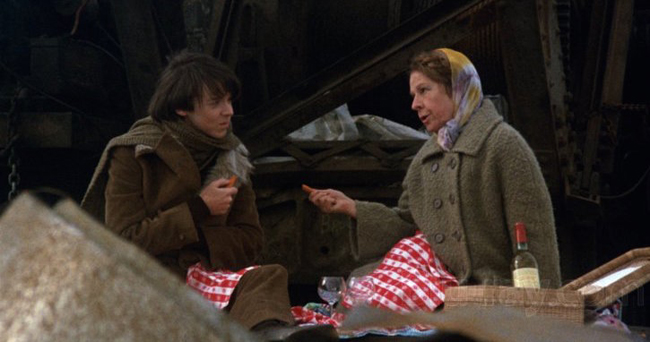
Harold and Maude’s influence on the look and feel of cinema is completely undeniable. Embracing earth tones in both costume and set design, it helped set the look for not only all of 70s cinema, but also 70s America, itself. Watching Hal Ashby’s masterwork is like stepping back into every house I’d ever visited in my youth – a simple, understated vibe we desperately hoped to replicate in We Are Still Here.
7) Straw Dogs (1971)
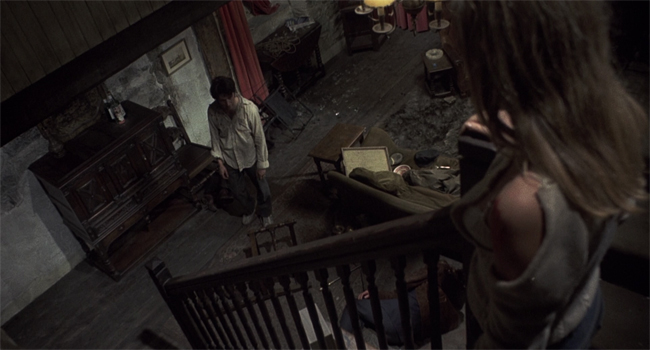
The finale of my film takes a rather stark turn toward home invasion, and when discussing how we hoped to visualize this onslaught, it always came back to Peckinpah.
8) The Beyond (1981)
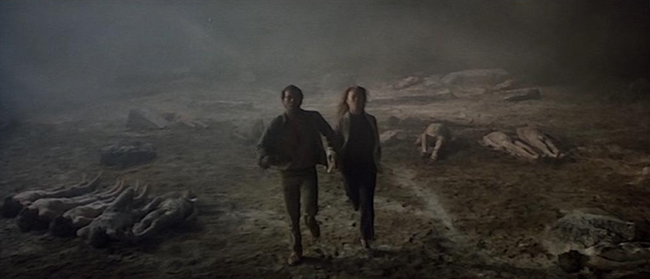
The first film from director Lucio Fulci I was ever exposed to, The Beyond embraces the ultra-surreal far more than any of his other works. A strange mix of drama and splatter, it epitomizes the wild world of classic Eurohorror. And We Are Still Here’s “Joe the Electrician”, who ventures into a basement and is violently attacked by a supernatural force, is a not-so-subtle reference to The Beyond’s “Joe the Plumber”, who suffers an identical fate.
9) Don’t Be Afraid of the Dark (1973)
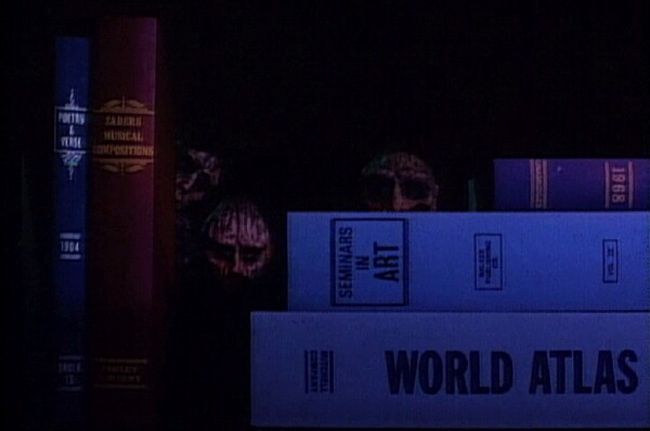
One of two made-for-television genre films that heavily influenced my upbringing, this ABC movie of the week was the perfect mix of human drama and unexpected horrors. The “old dark house” film is never more scary than when it takes place in your own home – and when the eerie creatures populating this movie make themselves known, it’s all the more terrifying that they’re after people you genuinely care about.
10) Don’t Look Now (1973)
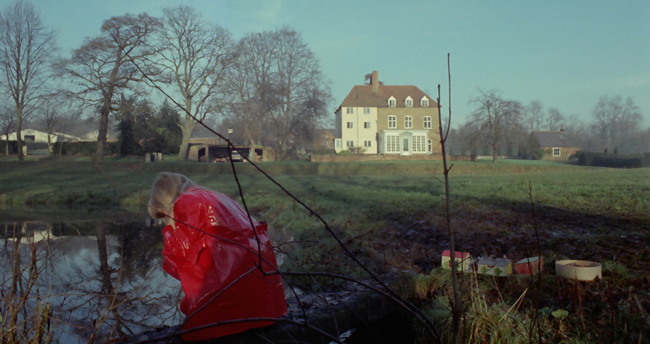
Very few films have ever used their editing as expertly as Nicolas Roeg’s 1973 classic. By hanging on shots for what seems like too long and ending scenes earlier than the audience expects, the film creates a subliminal sense of unease that permeates every frame of this horrifying tragedy. Its bold, wide photography, juxtaposed by stark closeups only further the unease. Our own photography and editing pay great homage to this and other films of its era, attempting to recapture a sadly long-forgotten cinematic language.
11) The Fog (1980)
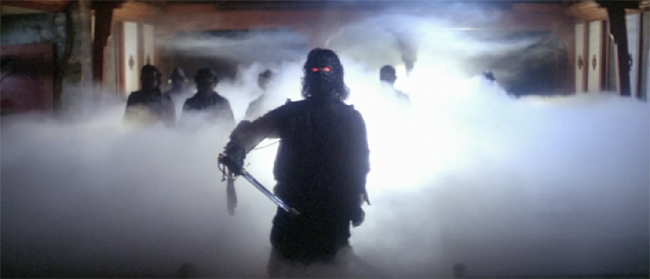
My absolute favorite film by John Carpenter, The Fog is a pitch-perfect example of fun horror. It never relents in its terror, yet continually embraces the enjoyment I so regularly seek in my genre fare. Moreover, the ghostly Captain Drake and his legion of pirate ghouls were a massive influence on the look and mannerisms of my Dagmar family – sad, rage-filled specters who aren’t afraid to draw blood, but are ultimately more victim than villain.
12) Dark Night of the Scarecrow (1981)
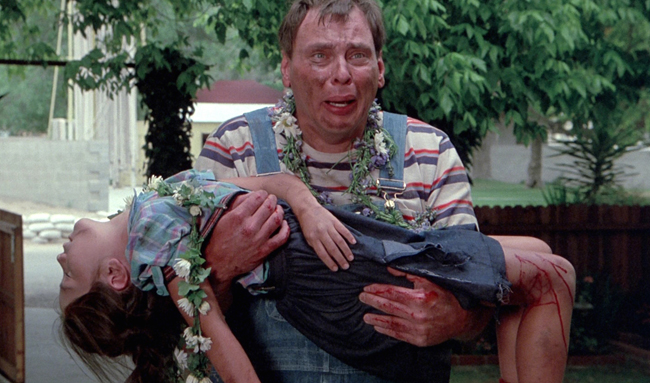
One of my earliest horror memories was staying up far too late to watch this brilliant made-for-TV shocker whose pacing was so deliberate that when the titular scarecrow finally began knocking folks off, I’d become so invested in the lives of these odd people, the violence literally paralyzed me. I wanted the lives of the people in my film to matter just as much, and used the characters in this odd little slice of cinema as a strong reference.
13) The House by the Cemetery (1981)
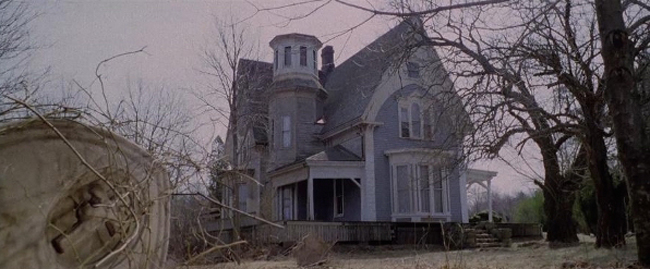
When this project was first brought to me, it was pitched, quite bluntly, as, “Let’s do something like The House by the Cemetery!” I immediately loved the idea, specifically because it’s my favorite Fulci film, bar none. And so, when crafting We Are Still Here, virtually everything came back House. From the plot (a loveless couple moving to a strange New England home that has something very evil in the cellar) to the tone (a melodramatic tale of the lengths people will go to be a family again), Fulci’s masterpiece is a cinematic roadmap to We Are Still Here. And to top it off, every character in my film (minus the Dave and Joe, noted above) are named after people or characters from it. If you want the ultimate influence on my film, this is most certainly it.
For more, listen to our interview during Episode 24 our of podcast.
 One of my earliest horror memories was staying up far too late to watch this brilliant made-for-TV shocker whose pacing was so deliberate that when the titular scarecrow finally began knocking folks off, I’d become so invested in the lives of these odd people, the violence literally paralyzed me. I wanted the lives of the people in my film to matter just as much, and used the characters in this odd little slice of cinema as a strong reference.
One of my earliest horror memories was staying up far too late to watch this brilliant made-for-TV shocker whose pacing was so deliberate that when the titular scarecrow finally began knocking folks off, I’d become so invested in the lives of these odd people, the violence literally paralyzed me. I wanted the lives of the people in my film to matter just as much, and used the characters in this odd little slice of cinema as a strong reference.

